
The Westland Wessex is a British-built turbine-powered development of the Sikorsky H-34. It was developed and produced under licence by Westland Aircraft. One of the main changes from Sikorsky's H-34 was the replacement of the piston-engine powerplant with a turboshaft engine. Early models were powered by a single Napier Gazelle engine, while later builds used a pair of de Havilland Gnome engines.

The Sembawang Air Base is a military airbase of the Republic of Singapore Air Force (RSAF) located at Sembawang, in the northern part of Singapore. The base motto is Swift and Resolute.
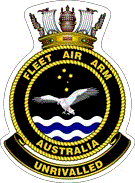
The Fleet Air Arm (FAA), known formerly as the Australian Navy Aviation Group, is the division of the Royal Australian Navy (RAN) responsible for the operation of aircraft. The FAA was founded in 1947 following the purchase of two aircraft carriers from the Royal Navy. FAA personnel fought in the Korean War and the Vietnam War, and participated in later conflicts and operations from host warships.
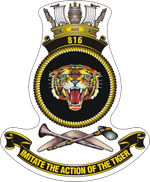
816 Squadron is a Royal Australian Navy Fleet Air Arm squadron that started out as a Royal Navy unit, 816 Naval Air Squadron.
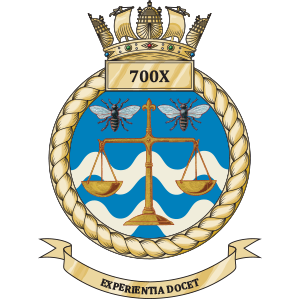
700 Naval Air Squadron is a Fleet Air Arm (FAA) Maritime Unmanned Air System squadron of the United Kingdom’s Royal Navy (RN). Known as 700X Naval Air Squadron, where the 'X' is used to designate 'experimental', it is currently the Royal Navy's Remotely-piloted air systems (RPAS) or 'drone' expert unit.
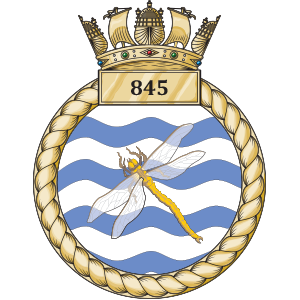
845 Naval Air Squadron is a squadron of the Royal Navy's Fleet Air Arm. Part of the Commando Helicopter Force, it is a specialist amphibious unit operating the AgustaWestland Commando Merlin HC4 helicopter and provides troop transport and load lifting support to the United Kingdom Commando Force and wider elements of the Royal Marines. In 2012, the squadron celebrated 50 years since it was awarded "commando" status.

723 Squadron is a Royal Australian Navy Fleet Air Arm squadron. The squadron was first raised in 1952 and throughout its history has served operationally during the Vietnam War, the Gulf War and in East Timor. It currently operates as a helicopter training squadron and is based at HMAS Albatross at Nowra, New South Wales.

815 Naval Air Squadron is a Royal Navy Fleet Air Arm squadron flying the AgustaWestland Wildcat HMA.2 helicopter and is the Navy's front line Wildcat Naval Air Squadron. The squadron is based at RNAS Yeovilton in Somerset. The squadron is capable of carrying out multiple roles such as: counter-narcotics, anti-piracy, Above Surface Warfare (ASuW), search and rescue, disaster relief and flying and engineering training. In the early 2000s, the Navy said that the squadron was largest helicopter squadron in Europe.
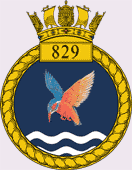
829 Naval Air Squadron was a squadron of the Royal Navy Fleet Air Arm. Before it was decommissioned in March 2018, it operated the AgustaWestland Merlin HM2 helicopter.
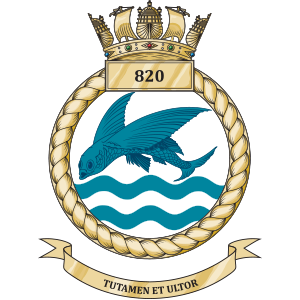
820 Naval Air Squadron is a Royal Navy Fleet Air Arm carrier-based squadron flying the AgustaWestland Merlin HM2 in Anti-Submarine and Airborne Early Warning (AEW) roles from RNAS Culdrose.

814 Naval Air Squadron or 814 NAS, nicknamed the Flying Tigers, is a squadron of the Royal Navy Fleet Air Arm. It is currently equipped with the AgustaWestland Merlin HM2 anti-submarine warfare helicopter and is based at Royal Naval Air Station (RNAS) Culdrose in Cornwall. The squadron was formed in December 1938 and has been disbanded and reformed several times.

725 Squadron is a naval aviation squadron of the Royal Australian Navy (RAN) Fleet Air Arm. The squadron was originally created in August 1943 as part of the Fleet Air Arm of the Royal Navy. It initially served as a fleet requirements unit, was rerolled in August 1945 as a target towing unit, then was disbanded in December 1945. In January 1958, the squadron was re-formed, as a fleet requirements and communications unit of the RAN, operating a variety of fixed-wing aircraft. The squadron was redesignated as an anti-submarine warfare training squadron in May 1959, then was decommissioned in May 1961 and absorbed into 724 Squadron. 725 Squadron was recommissioned in November 1962 as an operational anti-submarine helicopter squadron, flying the Westland Wessex. During this commission, the squadron was involved in HMAS Sydney's troop transport voyages, the rescue of personnel following the Melbourne-Voyager collision, and the Operation Navy Help Darwin relief effort post-Cyclone Tracy. The squadron was decommissioned in December 1975. 725 Squadron was commissioned for the fourth time in June 2015, this time as a training unit for MH-60R Seahawk Romeo helicopters: the squadron had been reactivated two years prior as a non-commissioned unit train on and accept into service the Romeos.

The first involvement Australia had with naval aviation was in 1911, when an Australian-born Royal Navy officer became one of the first four naval officers to receive pilot qualifications. During World War I, the Royal Australian Navy (RAN) experienced several forms of airborne operation, with HMAS Brisbane operating a seaplane, while HMA Ships Sydney and Australia were used for experiments with aircraft launch platforms. An aircraft embarked aboard Sydney was also involved in one of the first naval air battles. Several Australians also flew as part of the Royal Naval Air Service.

826 Naval Air Squadron was a Fleet Air Arm aircraft squadron formed during World War II which has been reformed several times since then until last disbanded in 1993.

737 Naval Air Squadron was a Fleet Air Arm (FAA) naval air squadron of the United Kingdom’s Royal Navy (RN). It was initially active during 1943 as an amphibious Bomber Reconnaissance Training Squadron. Reactivated in 1944 it operated as an ASV Training Unit until 1945. It was active again between 1949 and 1957. From 1959 it was the Anti-Submarine Warfare school at RNAS Portland. It operated Westland Wessex HAS.3 rescue helicopters from their land base at RNAS Portland, Dorset.

707 Naval Air Squadron was a Fleet Air Arm (FAA) naval air squadron of the United Kingdom’s Royal Navy (RN) which disbanded during February 1995. The unit was operational during the Second World War, having been established in February 1945 under the designation of Radar Trials Unit and subsequently disbanded in October of that year. It was reformed in December 1964 as an Advanced and Operational Flying Training (AFT/OFT) Commando helicopter squadron.

719 Naval Air Squadron was a Fleet Air Arm (FAA) naval air squadron of the United Kingdom’s Royal Navy (RN). It initially formed in 1944 as a Fighter Air Firing Training Squadron, at HMS Vulture, RNAS St Merryn, within the School of Air Combat, but at the start of 1945 it disbanded into 794 Naval Air Squadron. The squadron reformed in 1946 at HMS Owl, RNAS Fearn, as a Strike Training Squadron, before moving to HMS Gannet, RNAS Eglinton, where it became an Anti-submarine Training Squadron, disbanding there in 1949. The squadron reformed the following year at HMS Gannet as the Naval Air Anti-submarine School and remained there becoming the Naval Anti-Submarine Operational Flying School, eventually disbanding in 1959. However, in 1960, the squadron reformed, again at HMS Gannet, as the Joint Anti-submarine School Flight, this time operating helicopters. 719 Naval Air Squadron was granted first line status on 5 October 1961 and renumbered to 819 Naval Air Squadron.

744 Naval Air Squadron is a Fleet Air Arm (FAA) naval air squadron of the United Kingdom’s Royal Navy (RN). It was originally established in 1943 in Nova Scotia and has undergone various re-designations and reformations throughout its history. The squadron has transitioned from early air gunner training to anti-submarine warfare and trials, and in 2018, it reformed at MoD Boscombe Down as the Mission Systems and Armament Test and Evaluation Squadron. Now, in 2024, 744 Naval Air Squadron is taking on the new role of Joint Uncrewed Air System Test and Evaluation Squadron, leading the Ministry of Defence's efforts in UAS testing and evaluation.

772 Naval Air Squadron was a Fleet Air Arm (FAA) naval air squadron of the United Kingdom’s Royal Navy (RN) which last disbanded during September 1995. 772 Naval Air Squadron formed as a Fleet Requirements Unit out of 'Y' Flight from 771 Naval Air Squadron at RNAS Lee-on-Solent in September 1939. While the headquarters remained there, floatplanes were operated out of RNAS Portland, however, mid 1940 saw the whole squadron move north to RNAS Campbeltown and roughly twelve months afterwards the short distance to RNAS Machrihanish. The unit moved to RNAS Ayr in July 1944 and became the Fleet Requirements Unit School. In January 1946 the squadron moved to RNAS Burscough in Lancashire, before moving to RNAS Anthorn in Cumberland, in May. It became the Northern Fleet Requirements Unit upon moving to RNAS Arbroath, in June 1947, but disbanded into 771 Naval Air Squadron in October. 772 Naval Air Squadron reformed as a Helicopter Support Squadron at RNAS Portland in September 1974. In September 1977 the squadron took over responsibility for a number of Ships' Flights of Royal Fleet Auxiliary ships. The squadron was used to reform 848 Naval Air Squadron for the Falklands Task Force in 1982, with the Ships' Flights absorbed into 847 Naval Air Squadron. In August 1982 it took on the Anti-Submarine Warfare Flight from 737 Naval Air Squadron and between 1983 - 1985 a Search and Rescue Flight operated out of RNAS Lee-on-Solent.

860 Naval Air Squadron was a Naval Air Squadron of the Royal Navy's Fleet Air Arm during World War II, which was transferred to the Royal Netherlands Navy in 1946, and remains active.























